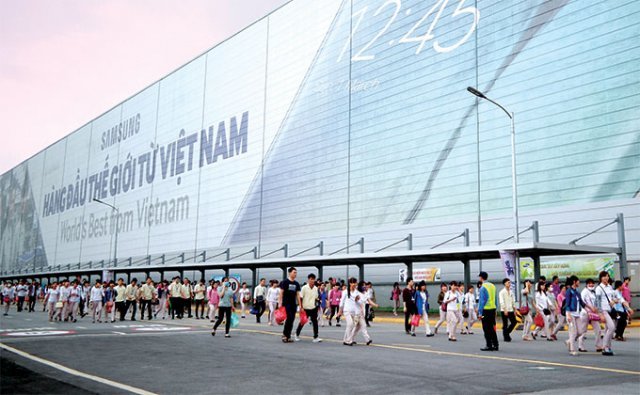 |
| “International Protection Agreements in the FTAs also provide more legal certainty for investors, which can lead to larger investment and projects in key industries.”— MR. TRENT DAVIES |
Due to Vietnam’s proactive approach to trade, investment incentives, and the US - China trade dispute, manufacturing was once again the biggest beneficiary of FDI. Following manufacturing, real estate and retail also benefitted, due to Vietnam’s growing urbanization and booming middle class, as well as the tourism and services sectors.
In February, the US - DPRK Summit was hosted in Hanoi, providing global promotion of the country and a great opportunity for Vietnam to strengthen ties with the US. President Donald Trump declared Vietnam a model for North Korea to emulate and advocated its openness to trade, recent growth, and business environment as an example of success.
Strong diplomatic and trade relations with the US coupled with Vietnam’s proactive approach to FTAs have created a strong foundation for Vietnam internationally.
It has become increasingly integrated into the global economy and has positioned itself in such a way that it isn’t too reliant on any single partner. I believe foreign investment will continue to perform strongly as a result.
Opportunities & challenges
Moving forward, Vietnam has outlined that it will prioritize attracting foreign investment into high, advanced, and environmentally-friendly technologies, clean and renewable energy, medical equipment production and high-quality healthcare services, education and training, luxury tourism, financial, logistics, and other modern services, high-tech and smart agricultural production, the development of modern technical infrastructure, and especially new sectors based on Industry 4.0.
The composition of imports and exports will begin to change as a result of FTAs being ratified and as the companies who moved from China in 2018 begin operations and production.
Foreign investors will see customs duties lowered and in some cases eliminated over a period of time. Lower duties will help lower the cost of importing / exporting goods such as European wine or Vietnamese garments and will increase trade flows.
In addition, the FTAs encourage more investment and trade through the reduction of non-tariff barriers and obstacles. For example, Vietnam will need to align with international standards in industries such as motor vehicles and pharmaceuticals.
International Protection Agreements in the FTAs also provide more legal certainty for investors, which can lead to larger investment and projects in key industries.
For investors, credibility and clarity are important. Vietnam will need to continue to improve its business and investment environment by improving institutions and reforming the legal framework and investment regulations. For example, dispute resolution and the enforcement and protection of intellectual property rights are key concerns for investors in Vietnam.
As a low value add manufacturing destination, Vietnam will need to look at building a quality supply chain for components and processes similar to China’s.
It will need to invest more into education to increase workplace productivity, as upskilling workers will be vital to balance increasing labor costs, and investment into technology and research and development (R&D) will enable Vietnam to grow with the evolution of Industry 4.0.
Finally, as cost pressures rise in major cities it will be important for Vietnam to continue to invest in infrastructure such as ports, airports, road and rail, as well as industrial land in more regional areas.
As a rapidly growing country, Vietnam doesn’t have the same level of legal framework and support for companies as more developed countries may have.
As such, I always advise foreign investors to do their research and leverage the knowledge and services of experts in markets who have the experience with the many complexities and myriad laws when doing business in Vietnam.
TRENT DAVIES/Manager, International Business Advisory, Dezan Shira & Associates
Vietnam Economic Times
 2018 was another milestone year of growth for Vietnam, with GDP growth reaching a ten-year high of 7.08 per cent, while FDI disbursement hit an all-time high of over $19 billion. Exports also grew 13 per cent.
2018 was another milestone year of growth for Vietnam, with GDP growth reaching a ten-year high of 7.08 per cent, while FDI disbursement hit an all-time high of over $19 billion. Exports also grew 13 per cent.